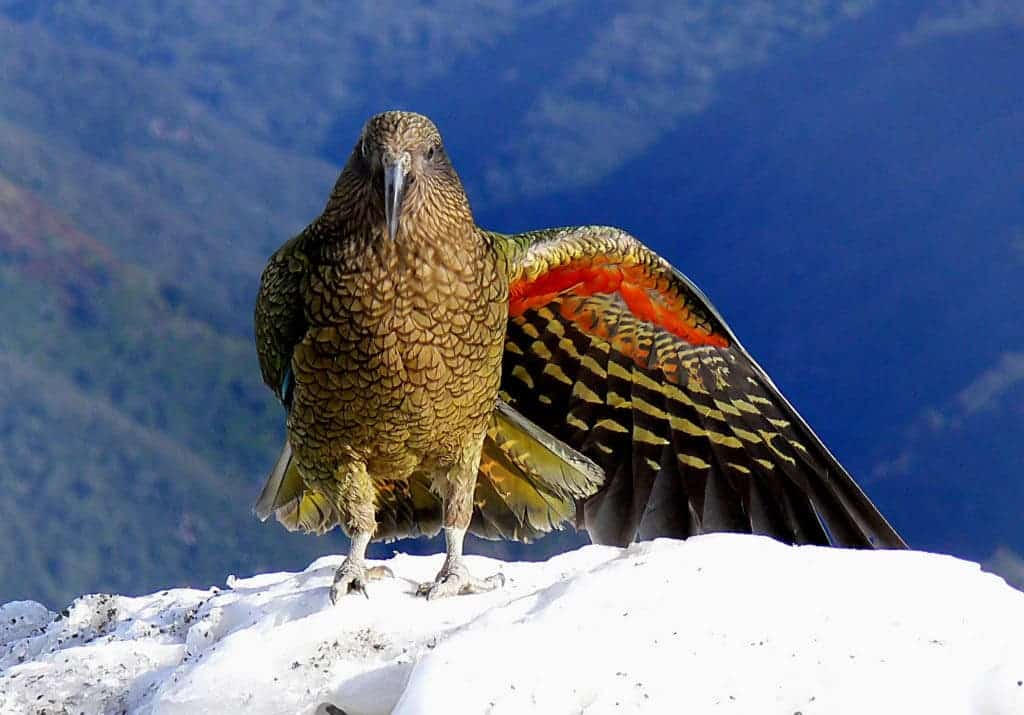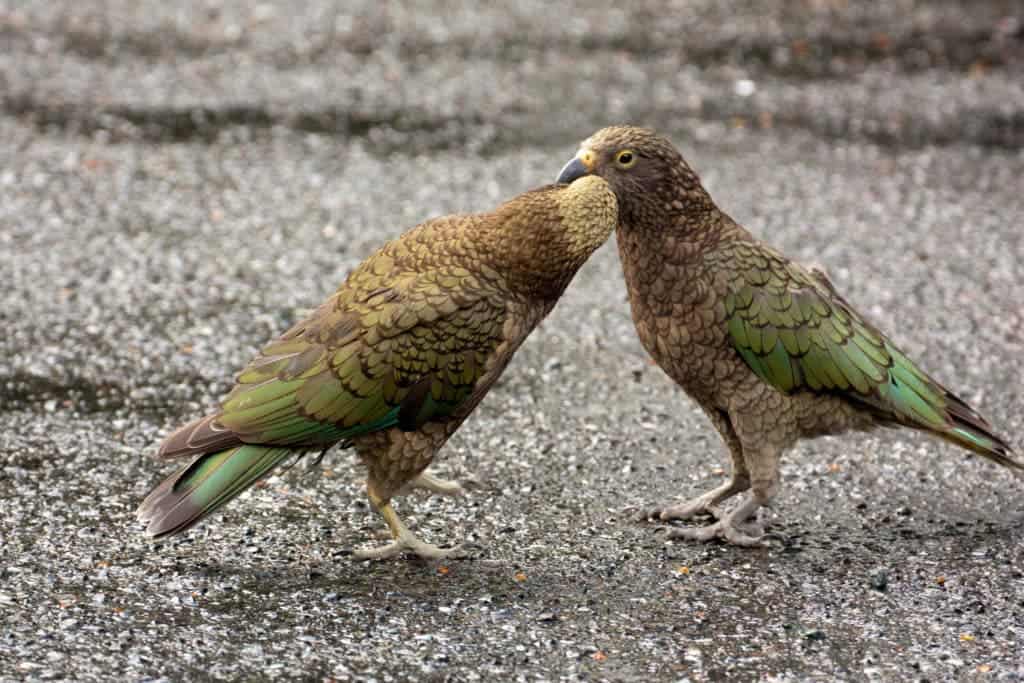
The New Zealand kea is an endemic parrot found in the South Island’s alpine environments. As many as 5,000 and as little as 1,000 individuals are believe to exist in the wild. Credit: Bernard Spragg. Flickr.
A big smile can sometimes brighten even the gloomiest mood. Same goes for laughter which, like yawning, is proven to be contagious. This peculiar social mirroring effect is not reserved for humans only as one recent study showed the kea parrot in New Zealand also has an infectious laugh.
A playful bird
You can meet the kea (Nestor notabilis) in New Zealand’s mountainous South Island. If you’re fortunate enough to come across this adorable parrot one of the first things you’ll notice is the bird’s colourful vocal repertoire. Among the many sounds this parrot makes, there’s the so-called ‘play call’ — a warbling sound which announces other keas that this parrot is in a playful food and induces other birds to join in on all the fun.
This behaviour was first recorded by Raoul Schwing of the Messerli Research Institute in Austria and colleagues. The team played recordings of kea play calls as well as other vocalizations to wild birds for five minutes to see how they react. A robin song, which is another species living in the same habitat as the kea, acted as the control for the study.
The kea’s reaction to the sounds was pretty clear. When the birds, regardless of their sex, heard the playful tune, they started exhibiting more playful behaviour than when other calls were played. If no other kea was around, the bird would simply start playing by itself, either by making weird moves in the air or toying around with objects.
“Upon hearing the play call, many birds did not join in play that was already underway, but instead started playing with other non-playing birds, or in the case of solitary play, with an object or by performing aerial acrobatics,” the researchers write.
“These instances suggest that kea weren’t ‘invited’ to play, but this specific call induced playfulness, supporting the hypothesis that play vocalisations can act as a positive emotional contagion.”

Two playful Keas. Credit: Flickr.
Because the kea was not interesting in joining a playful party already happening, this suggests to the researchers that the call is not an invitation to ‘come out and play’. Rather, it may be that the sounds put the birds in a playful frame of mind, as reported in the journal Current Biology.
The kea’s playful repertoire is very varied, even from the limited observations Schwing et al. managed to record. It’s common for the birds to perform aerial acrobatics or chase each other when they hear the play call. A solitary bird will often toss an object around but the researchers saw non-solitary birds toss objects like little twigs among themselves too. One kea even presented itself on its back to invite others to ‘wrestle’, a non-aggressive behaviour often seen in cats.
“The fact that at least some of these birds started playing spontaneously when no other birds had been playing suggests that, similar to human laughter, it had an emotional effect on the birds that heard it, putting them in a playful state,” says Schwing.
The impressive feature of the kea, however, is the infectious nature of this play call. It’s the first non-mammal to exhibit contagious emotions, joining a select few like chimps, rats, and humans, of course.
Not everything about the kea’s life is a laughing matter. Sadly, the bird is listed as vulnerable to extinction according to the International Union for Conservation of Nature.









